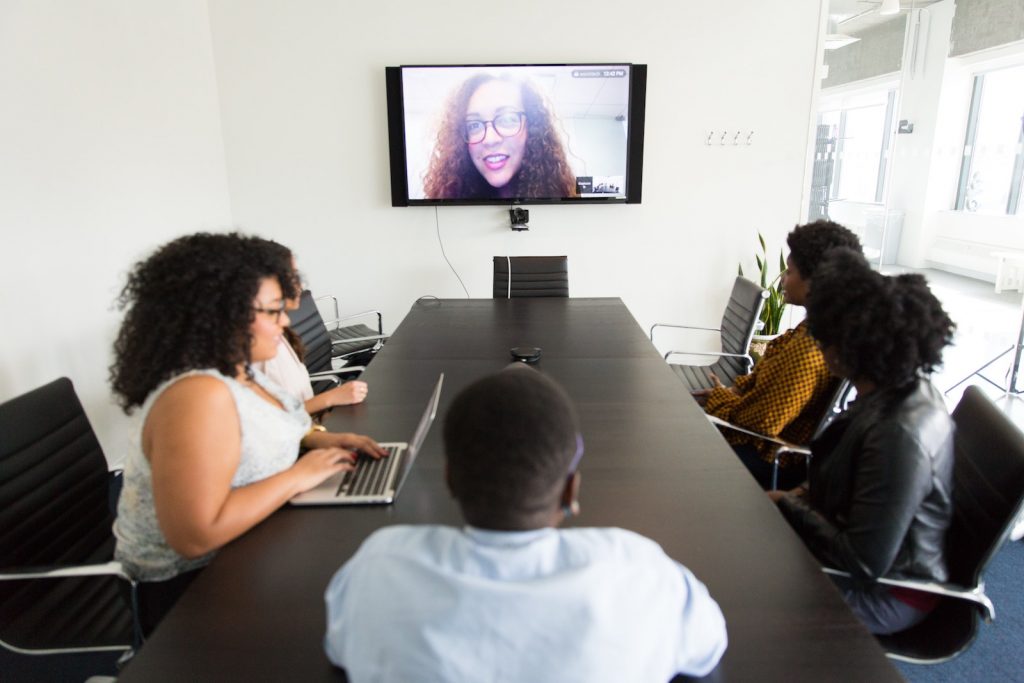Don’t schedule the meeting until you can answer this question: 3 Tips Remote Employee Engagement

Don’t schedule the meeting, virtual or in-person, until you can answer this question: “What do I want people to think, feel and do after the meeting?” Studies tell us that leaders think more highly of the meetings they call than the people attending them. 1,300 surveyed managers said 79% of the meetings they initiated were extremely or very productive. On the other hand, 90% of people report daydreaming in meetings, and 73% admit that they use meeting time to do other work. Somewhere there is a mismatch or denial going on. (Sidebar: I’m not gonna lie, I’ve used $100 per plate luncheon meetings to do other work!)
When I work with teams, I hear the same reasons for hating meetings over and over again:
- It could’ve been an email;
- They last too long; and
- They take away from my real work.
If there’s no follow up necessary or action to be taken, then the meeting probably was an FYI and could’ve been an email. As much as we want everybody to know what’s going on across our organization, everybody doesn’t need to sit through a 15-minute spill about each ongoing-project, especially if there is little interdependence between the team member’s work. While it’s important to keep people informed, there’s a better way to do it! Commit to spending no more than 15% – 20% of your meeting time on status updates. Make sure everybody knows to read the information before the meeting, reference specific highlights during meetings, give people the opportunity to ask questions, and hold them accountable for the information! Bear in mind, this does not mean that you don’t have to repeat important information (One of your chief responsibilities as leader is communication and alignment, which means you repeat yourself all the time). Simply, you don’t use a lot of meeting time to do it.
So, what do we do about, “They last too long”? First, we start with honesty. Any meeting that could’ve been an email is too long. Second, meetings last too long when people aren’t engaged. If participants are not actively participating, they are probably checking their email (If you are the leader and checking your email, the meeting is doomed because participants will follow suit). The key to a useful meeting, whether 30 minutes or 3 hours is purpose, engagement, and follow up. This takes us back to where we started, don’t schedule a meeting until you can answer, “What do I want people to think, feel and do after the meeting?” Everything flows from this one question, and it’s even more important for virtual meetings!
Purpose:
- Have a clear topic and share it with participants before the meeting. Having a clear purpose or meeting topics does NOT necessarily mean a completely flushed out agenda. Actually, the benefit of not having a flushed out agenda is that it creates real opportunities for the participants to contribute and it shows, in real time, that you are open to their perspectives. In order to give participants a true opportunity to participate, send them any material that they need to fully engage in the meeting prior to the meeting. Distributing handouts in a meeting forces people to multitask, which we know causes errors and will likely cause them to miss something
Give them time to settle in:
- Tell them up front what you want to focus on and limit your key issues.
- Let them know whether you’re recording the meeting and whether you intend to share the recording. Also, let them know if you will be sharing the chatbox comments. This allows people to fret less over taking notes. It also gives them a reason to review what happened in the meeting. Be sure to send recordings and comments as soon as possible after the meeting.
- Build in time for icebreakers. Consider using a timer to make sure people don’t ramble during the icebreaker. While most video meeting platforms have timers, I use this one because people can see and hear it, it changes colors, and it helps build camaraderie.
- Estimate meeting end times when you call the meeting so people can plan. If your meeting is going to be longer than two hours, build in break time. If you finish early, give participants their time back!
Prime them for engagement (not group head nods):
- If you’re going to simply tell them what you want, you probably could’ve sent an email, made a short video to reiterate your directive (which is useful because body language helps to convey a message and connects to different learning styles) and let them email you back with questions.
If your goal is to treat the meeting as an opportunity for learning from one another and two-way communication, create a list of key questions about your meeting topic prior to the meeting.
Sample Questions:
- What do you think our challenge is regarding remote learning?
- Why is this issue important?
- How much of a priority is this issue?
- What could change, up or down, it’s priority status?
- What’s our SWOT on this issue?
- What could/should we do?
- What are the key concerns of our customers?
Ask participants to type their answers in the chatbox or send them to a designee prior to the meeting who will place them in a shared document that will be used during the meeting. The objective here is to get a sense of what the participants actually think and know. This way of gathering information helps to reduce groupthink and compels participation. This information should also inform your approach to addressing concerns, managing resistance, and setting priorities.
Follow Up and “what’s next?”:
- Set aside time for clarifying questions.
Make it clear what the next steps and deadlines are and who is responsible for what.
Resist entertaining new suggestions and information from participants who didn’t engage during the meeting UNLESS not using that information would be negligent or it’s clear that the information was available at the time of the meeting. Your goal should be to make your meetings valuable, strengthen your entire team and not create a backdoor influence culture.
The folly of many leaders is that they don’t take the time to plan their meetings, whether those meetings are in-person meetings or virtual meetings. Further, leaders rely too heavily on gimmicks to make meetings fun rather than thinking about how to make them productive. Ironically, poorly planned meetings make a leader’s job harder because it undermines their credibility and people only attend as a function of the power dynamic.
References:
Why Your Meetings Suck and What to Do About It
https://hbr.org/2019/01/why-your-meetings-stink-and-what-to-do-about-it
Don’t Set An Agenda Before Important Meetings
https://hbr.org/2019/07/dont-set-an-agenda-before-important-meetings



